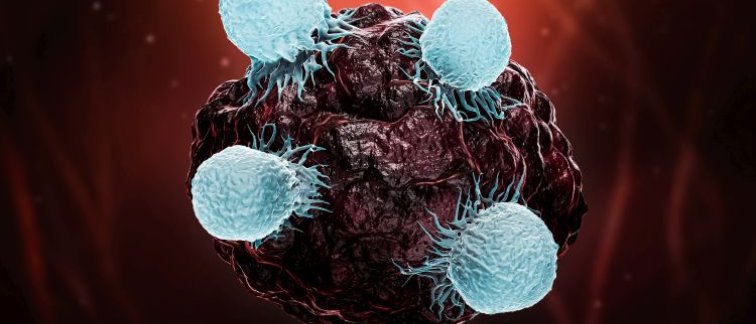Research to explain different immunotherapy outcomes among patients is an area of intense focus. New insights into immune escape by lymphoma obtained in the laboratory of Dr. Marcel Spaargaren and Prof. Steven Pals at Amsterdam UMC were recently published in the prestigious scientific journal Blood.
Tumor trickery
First author Marthe Minderman explains: “Cancer immune evasion is a major hurdle for effective anticancer therapy. Key strategies of tumor cells to avoid the immune system include hiding their identity by removing specific markers from their cell surface that reveal their true nature: the major histocompatibility complex (MHC) molecules. But tumor cells may also place signals on their cell surface that command immune cells to stop their anticancer activities, this is called activation of immune checkpoints. In particular, the immune checkpoint protein programmed cell death 1 (PD-1) and its ligands, PD-L1 and PD-L2, play a key role in immune evasion in solid cancers and hematological malignancies.”
Immune evasion and immunotherapy against lymphoma subtypes
Principal investigator and co-senior author Dr. Marcel Spaargaren continues: “Our study indicates that different large B-cell lymphoma subtypes employ distinct immune evasion strategies: while in primary mediastinal B-cell lymphomas (PMBCLs) overexpression of the immune checkpoint PD-L1 plays a major role, in primary testicular lymphomas (PTLs) and primary central nervous system lymphomas (PCNSLs) loss of MHC expression is the major mechanism of immune evasion. This suggests that PBMCL patients, but not PTL and PCNSL patients, are likely to benefit from immunotherapy with PD-1/PD-L1 immune checkpoint inhibitors.”
Implications for clinical trails
These findings demand a critical reappraisal of the prevalence of PD-L1 expression in lymphoma subtypes, say the authors. PD-L1 is encoded by a gene on chromosome 9p24.1 and abnormalities in this DNA region in cancer cells result in overexpression of this checkpoint surface signal. Therefore, DNA analysis may offer diagnostic opportunities besides looking directly at PD-L1 surface levels. “Our new insights have an immediate impact on ongoing clinical trials involving immune checkpoint inhibitors (e.g., nivolumab and pembrolizumab) in PCNSL/PTL patients, as the underlying mechanism of immune escape is not targeted by these medicine,” concludes Prof. Steven Pals, principal investigator and co-senior author of this seminal publication.
This study was facilitated by a grant from Lymph&Co.
For more information, see:
Minderman, M., Amir, A. L., Kraan, W., Schilder-Tol, E., Oud, M., Scheepstra, C. G., Noorduyn, A. L., Kluin, P. M., Kersten, M. J., Spaargaren*, M., & Pals*, S. T. (2021). *shared senior authors. Immune evasion in primary testicular and central nervous system lymphomas: HLA I and II loss rather than 9p24.1/PD-L1/PD-L2 alterations. Blood. https://doi.org/10.1182/blood.2021011366

